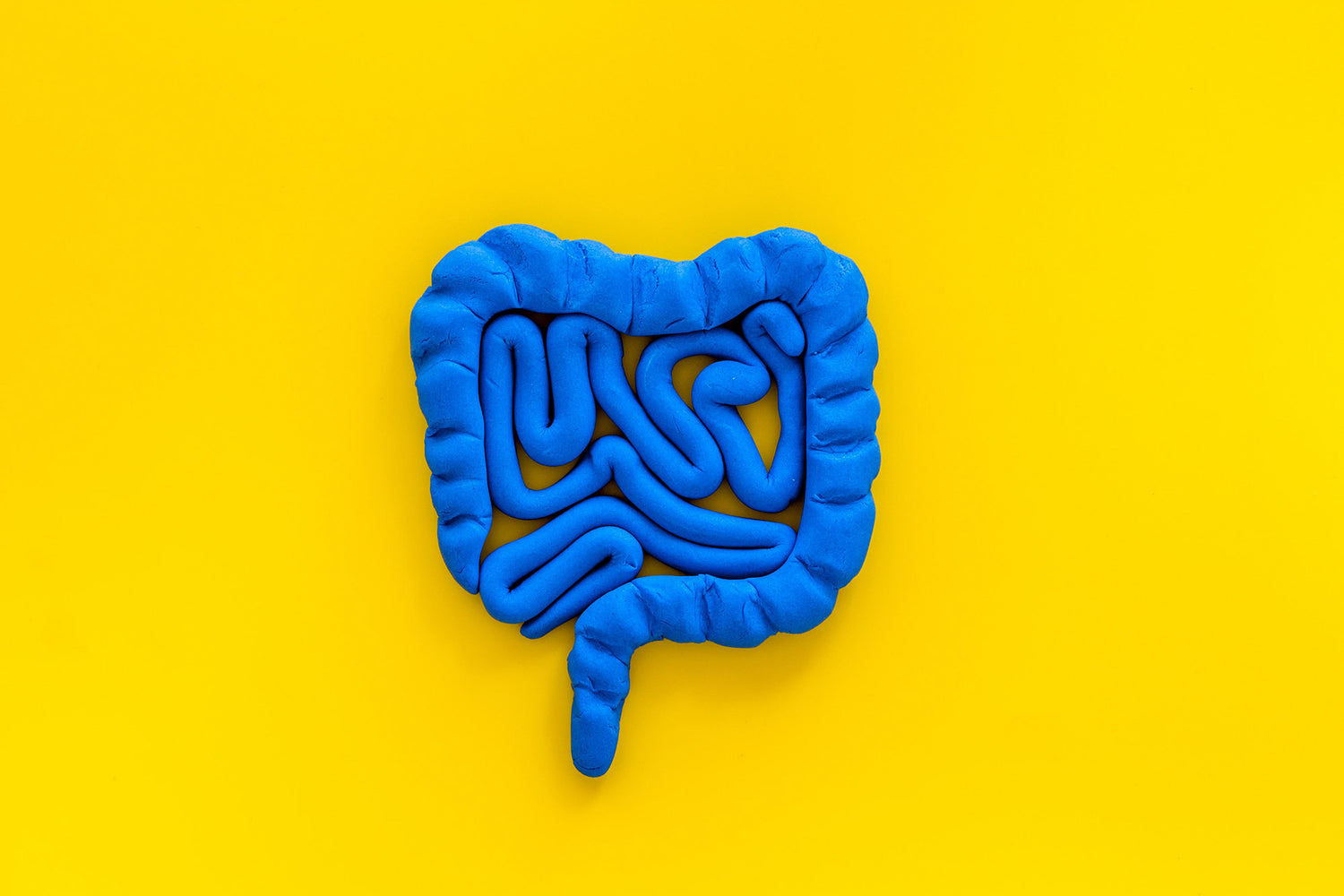If you’ve committed to getting to grips with your gut health this year, a good place to start is by learning exactly how the gut works. We asked dietitian Laura Tilt for the lowdown.
Gut Basics
Stretching around 8 metres (about the length of a London bus), you can think of your gut as a long hollow tube, which extends from mouth to bottom.
Your gut is an really important organ, responsible for breaking down the food you eat into smaller nutrients that can be absorbed and used for energy and to support all of the normal functions of your body.
The gut also forms a crucial part of your immune system - about 70% of the body’s immune tissues are located in the gut. These tissues monitor the contents of what’s moving through your gut, and help to prevent potentially harmful microbes from taking hold.
So How Does It Work?
Unless you experience regular gut symptoms, you probably aren’t too aware of your gut going about its normal business. But that doesn’t mean it doesn’t need looking after!
Taking some time to get to know how your gut works can give you a greater appreciation for it, and may even encourage you to take some simple steps to keep it happy.
So let’s get started with learning how it works by following the journey of food through your gut.
Mouth
It’s time to eat! As food enters your mouth, mechanical digestion begins - i.e. chewing. Your teeth tear food into smaller pieces preparing for it to be swallowed. This also increases the food’s surface area, allowing digestive juices to do their job efficiently.
Three pairs of salivary glands in your mouth lend a helping hand by producing over a litre of saliva each day, which moistens food for easier swallowing. Saliva is mostly water, but contains some antibacterial agents and enzymes - specialised proteins which begin the breakdown of food into smaller molecules.
Oesophagus
Ready to swallow? As you do, food moves from your mouth into your oesophagus (or food pipe), a short muscular tube linking your mouth with your stomach.
The oesophagus is about the length of a ruler, and is coated in a sticky mucus which helps to protect it from sharp or rough pieces of food. Muscular waves (known as peristalsis) move food down the oesophagus and into the stomach.
Stomach
Once food arrives in the stomach, the next stage of digestion begins. Your stomach contains three layers of muscle, which churn the food into smaller pieces whilst mixing it with digestive juices.
Let’s talk about those juices - they’re a mixture of stomach acid and enzymes. Stomach acid helps to kill any potentially harmful bacteria, and starts to unwind complex proteins preparing them for absorption. The enzymes get to work breaking down food into smaller units. Together, these processes turn food into a liquid (known as called chyme).
Depending on what’s contained in your meal, food can spend about three-four hours in your stomach. If it’s high in fat or protein, it may be there for longer. But, when it’s ready to leave, it moves through a valve at the bottom of the stomach, which opens and closes, sending the now liquid meal into the small intestine.
Small Intestine (Also Known as the Small Bowel)
The small intestine might be small in diameter (about two cm wide) but it’s long - around six meters in total. It forms the largest part of your gut and has a huge surface area, which is necessary because 90% of absorption takes place in the small intestine.
As food moves through the first part of the small intestine, stomach acid is neutralised by secretions from the pancreas, which are squirted in via a small duct. The pancreas also secretes enzymes which digest proteins, carbohydrates and fats into absorbable units. The gall bladder plays a role too, delivering bile to the small intestine, to help with the breakdown of dietary fat.
Absorption of nutrients takes place throughout the length of the small intestine. The majority of the walls of the small intestine are covered in tiny little bumps known as villi. These are connected to a rich blood supply, allowing nutrients to be absorbed directly into the bloodstream.
Large Intestine (Also Known as the Colon, or Large Bowel)
By the time the liquid meal reaches your large intestine, it’s mostly indigestible fibres and liquid that remain. The trillions of microbes which are housed in your large intestine now get to work, breaking down these fibres, extracting energy and producing compounds known as short-chain fatty acids, which help to keep the lining of your gut healthy.
Meanwhile the tissues lining the large intestine reabsorb water and salts, forming stools (poop) from the remaining waste products.
Rectum and Anus
Once stools are formed they move into your rectum. The rectum is about 10-20cm long and forms a temporary storage site for your poop until it leaves your body. The lining of the rectum contains nerves that communicate with your brain giving you the message ‘it’s time to go’.
The anus is the opening at the end of your gut. It’s surrounded by inner and outer muscles (called sphincters) which remain closed until it’s time to poop. The inner sphincter will open involuntarily - this is your brain saying, ‘OK let’s go’! The external sphincter is under voluntary control, which means you can hold back if it’s not the right time to go - for example you’re in a packed train or not near a toilet. But once you are ready and both muscles relax, you’ll be able to poop.
So there we have it, the whole process from start to finish. Pretty amazing, right? Looking after your gut can take various forms: taking care of yourself through a diverse diet, regular exercise and managing stress are all key. Perhaps you’ve been inspired by hearing the journey of your food to have a look at more information on your gut health?







